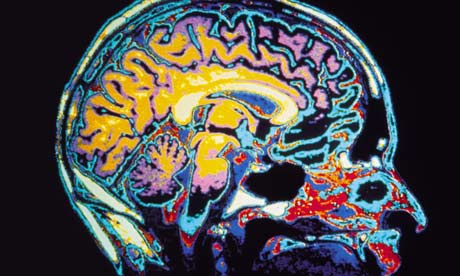 Beginning next month, doctors will use a brain scan to raised diagnose Alzheimer's. The U.S. Food and Drug Administration recently approved a fluorescent dye that binds to amyloid plaques, a physical hallmark of the disease, as a diagnostic tool.
Beginning next month, doctors will use a brain scan to raised diagnose Alzheimer's. The U.S. Food and Drug Administration recently approved a fluorescent dye that binds to amyloid plaques, a physical hallmark of the disease, as a diagnostic tool.Currently, doctors can't be bound whether or not or not a patient's brain is riddled with amyloid plaque still when the patient's death. But now, clinicians will use a weakly radioactive dye to go looking for the presence of plaques in a very living patient. The dye binds to the starchy amyloid that builds up within the brains of Alzheimer's patients and might be visualized in a very PET scan. The FDA approved the scan as a way for estimating plaque content within the brains of individuals exhibiting cognitive decline. The presence or absence of plaques in a very patient with forgetfulness, confusion, or alternative signs of neurological hassle might facilitate doctors with their diagnoses.
Although scientists don't apprehend whether or not or not the plaques are the reason for Alzheimer's,
the plaques are strongly correlated with symptoms of dementia. Elderly individuals with the plaques
have a additional fast mental decline than the elderly who do not have the plaques. And despite the fact
that doctors cannot treat Alzheimer's, diagnostic tools just like the plaque-marking dyes can facilitate
them establish patients with the disease, moreover as those that don't have it however exhibit signs of
mental decline because of alternative issues."A positive scan would add additional weight to our bedside diagnosis," says Liana Apostolova, an Alzheimer's specialist at the University of California, l. a. . She says the technique may be helpful in diagnosing patients with uncommon sorts of the disease and patients whose symptoms could also be caused by alternative conditions, like drug aspect effects or depression. "If a patient's cognitive impairment is solely because of depression, then a negative amyloid scan would facilitate ascertain that," Apostolova says.

The new dye and alternative plaque-marking dyes are utilized in clinical analysis for years, however Eli
Lily, whose subsidiary Avid Radiopharmaceuticals produces the diagnostic agent, is that the initial to
bring the technique to the doctor's workplace. Some specialists are still involved that the clinical use of
the dye may well be a trifle premature, since the presence of the plaques is not enough to substantiate
an Alzheimer's diagnosis. In fact, the amyloid deposits are typically found in older individuals with
traditional mental ability and will be related to alternative neurologic conditions. For now, the Avid dye
is just approved to be used to rule out Alzheimer's (if no plaques are detected, a doctor is assured the
patient does not have the disease).
"I suppose it puts the clinician in a very bind," says Ronald Petersen, director of the Mayo Clinic's
Alzheimer's Disease analysis Center. If a scan is negative, then a doctor will tell a patient that amyloid
isn't contributing, however if a scan is positive, what ought to a clinician do? "The FDA nor the corporate
says something concerning the which means of a positive scan," says Petersen. "The information isn't
out there."
Petersen and others agree, however, that plaque-detecting diagnostics are crucial for Alzheimer's
analysis. The dyes enable researchers to see that participants carry plaques and therefore style higher
trials for plaque-attacking medication. inside the trials, plaque tracers is used to watch the quantity of
plaque in a very participant's brain throughout the course of treatment.The tracers can even facilitate the sector elucidate the causes and disease mechanisms of Alzheimer's,which is able to be key to treating or preventing the disease. Researchers will study those who have amyloid plaques and monitor their cognitive talents over time. From the pool of cognitively traditionalelderly with a positive scan, knowing who "develops Alzheimer's disease and who does not can
facilitate us explore disease susceptibility and resistance, establish all genetic risk factors and also the
early metabolic changes, thus we are able to then target these specific processes with medication,"
Apostolova says. "Diagnoses is useful, however we would like therapeutics."
More than 5 million individuals within the us have Alzheimer's, which range is predicted to double in
coming back years, in line with the U.S. Department of Health and Human Services. By their early 70s, as
several as thirty % of individuals have amyloid plaques within the brain, says Michael Weiner, principal
investigator of the Alzheimer's Disease Neuroimaging Initiative, that tests imaging techniques moreover
as biomarkers for Alzheimer's that would be found within the blood or cerebrospinal fluid.
*********************************************************







Join The Community